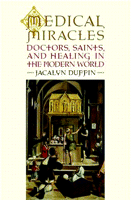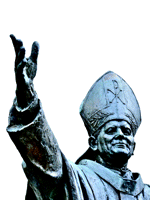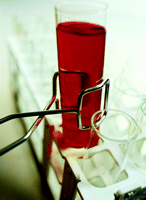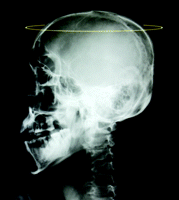Evidence-based Sanctity
- P.K. Rangachari, MBBS, PhD
Sometime in the late eighties, author and hematologist Jacalyn Duffin, MD, PhD, was asked to examine fourteen tissue specimens (slides of blood and bone marrow) taken over an eighteen-month period from an unnamed female. Duffin noted that the patient had suffered from a severe case of acute leukemia and that, over the course of specimen collection, there had been a period of remission, followed by relapse, followed by a second remission. Blind to the details of the case, Duffin assumed that her review of the slides would be used in legal proceedings concerning the patient’s death.
But as she learned much later, the patient who had provided the samples for Duffin’s inspection had in fact mounted what some were calling a “miraculous” recovery from leukemia, and Duffin had been contracted to provide her expert analysis of the blood slides for proceedings of a very different sort. Specifically, the once-ill patient had made prayers over the course of her recovery to the Blessed Marguerite d’Youville, the eighteenth-century founder of the Order of Sisters of Charity of Montreal. Duffin’s testimony was to prove material to the Vatican’s ultimate canonization, some years later, of Marguerite, who thereby became the first Canadian-born saint. Duffin’s experience, including her attendance at the canonization ceremony, led her to explore the world of medical miracles that forms the subject of this book.
Duffin’s account of the experience is structured along the Hippocratic triad of patient, illness, and doctor. The story is rich and thoroughly enjoyable, and the author raises complex issues that are relevant to current [if not original (1)] medical discussions that occur under the shibboleth of “evidence-based” practices. Although all major religious traditions venerate holy individuals who are credited with the working of miracles, the Roman Catholic Church has a particularly detailed process according to which the Church recognizes sanctity. The Church maintains that, whereas God alone performs miracles, saints are to be recognized for interceding in the performance of miracles on behalf of supplicants. Such recognition is predicated on evidence that must be presented according to a complex and detailed system of requirements. Duffin, also trained as a historian, traces the gradual evolution of this process in her book, outlining the series of late-sixteenth-century reforms that sought to tighten the process by which the Church would recognize saintliness.
The road to sainthood is long and arduous. Typically, a case for canonization can start only after the individual has been dead for a matter of years; formerly, fifty years had to transpire before the process could begin, but this period was reduced early in the last century to a mere five years after death. Subsequent to the waiting period, the first requirement is the production of a carefully documented and detailed biography that testifies to an exemplary and virtuous life. Acceptance of this documentation signifies that the person has been deemed venerable. If the documentation further indicates that at least one miracle can be properly attributed to the person, he or she is formally beatified. Later this year, Pope John Paul II, who died in 2005, will be beatified in consideration of a miracle (the healing of a Parkinson’s patient) that was recognized last year by the Congregation for the Causes of Saints and accepted by Pope Benedict XVI. To complete the process of canonization, the soon-to-be Blessed John Paul will need to be recognized for a second miracle, whereupon he would become Saint John Paul.
Duffin points out that, at each step toward canonization, the evidence put forth on behalf of the candidate must be critically considered and formally challenged. (Traditionally, an important functionary in this criticism was the Promoter of the Faith—more popularly called the Devil’s—Advocate a role that was reformed under the leadership of Pope John Paul II himself.) The Vatican sets the task of determining whether a scientific explanation can be provided for the event that has been alleged a miracle. For recognition by the Church, miracles must be deemed inexplicable according to scientific methods. In this way, the Vatican, far from dismissing science, uses it as the touchstone for testing claims for beatification and canonization.
Duffin asserts that healing miracles have formed a significant proportion of all claims considered for canonization; the percentage of miracles involving healing has, over four centuries, ranged in the area of 87–96%. Thus, witnesses to canonization proceedings have been drawn largely from the scientific community, with a predominance of physicians. Duffin provides a wealth of detail to the increasingly important role of physicians in testifying in such cases, rising from 18.4% of cases in the seventeenth century to 68% in the twentieth century. In recorded testimonies, the Church has been careful to demand that analyses of evidence should reflect the best practices of the time, utilizing up-to-date technologies in diagnosis and therapy. New technologies that have appeared over time in the Vatican archives include the stethoscope, the thermometer, X-rays, fluoroscopy, and even the Wasserman test. Duffin argues that the passage of time has been marked by increasing proof-of-diagnosis stringency, citing the emergence of imaging and tissue-probing technologies in diseases ranging from cancer to orthopedic and nervous conditions. The miraculously cured patients that appear in the Vatican records were often treated with the best possible modalities available, whereas cases tended to be dismissed if they relied solely on faith or eschewed orthodox medical practice. The consistent position of the Church, according to Duffin, is that miracles must be shown to defy established norms.
The physicians who appear in the sanctification records that Duffin investigates were required neither to be Christian nor believers in the miraculous. Indeed, for physician testimony to be taken as corroborative of a miracle, only two criteria seem to have been established. First, the prognosis for recovery had to be declared hopeless in the eyes of the expert witness, with due consideration of the best treatment available at the time. Secondly, the corroborating testimony should include an expression of surprise on the part of the physician in response to the patient’s recovery. Duffin points out that her review of the tissue samples in the Marguerite d’Youville proceedings had met both criteria, placing Duffin in the interesting position of having supported Church claims of the miraculous as well as having to confess her own scientific ignorance! As Duffin puts it, “The doctor must say, ‘The operation was a failure, but the patient lived’.” In other words, the Vatican looks for the physician to set up the null hypothesis that death is certain. Recovery, the alternative hypothesis, is the precondition on which the Church’s investigation into the miraculous can be pursued; the Vatican may determine a miracle only after the doctor has been stumped.
Duffin does a magnificent job of drawing together the diverse threads that feed into her concluding chapter. She affirms a deep commitment on the part of the Vatican to review scientific evidence and to practice scientific skepticism. In her view, “Religion celebrates and endorses medical science, and it appears to have no need to refute it. Religion relies on the best of human wisdom before it imposes a judgment from inspired doctrine. When science provides a plausible explanation, religion will wait.”
Intriguingly, religion, as portrayed in Duffin’s research, appears more comfortable with accepting the tenets of science than the converse. The comparison between science and religion is one of the interesting paradoxes that colors Duffin’s book. Duffin notes that several of her colleagues remain skeptical of her explorations into medical miracles, and she argues that the heart of medical identity beats with an absolute commitment to vanquishing the unknown. Duffin cites a colleague who insists that “we may never find the natural explanation, but one must exist.” The tension between this type of expression of faith in science, on the one hand, and the author’s encounter with logic in religion, on the other hand, is drawn throughout the book. Duffin’s foray into “evidence-based sanctity” is a refreshing perspective—especially to those of us who have become wary of faith-based assertions concerning evidence-based medicine (2).
My review of Duffin’s book has focused rather narrowly on specific elements. The book has much more to offer. Elegantly written, there is a wealth of data in the form of tables and figures. A number of photographs are reproduced that show examples of the healing miracles that Duffin explores. The author gives many vivid descriptions of her experiences scouring the Vatican records, and Appendix A makes compelling reading. The book is well-referenced, with a wealth of notes and a detailed bibliography.
- Copyright © 2011
P.K. Rangachari, MBBS, PhD, is Professor (Emeritus) of Medicine at McMaster University, Hamilton, Ontario, Canada. He teaches in the BHSc (Hons) Programme, where he continues to introduce students to toxicology, history, and creative writing. E-mail chari{at}mcmaster.ca; fax 905-540-3825.









